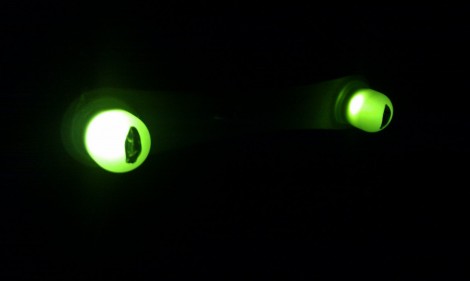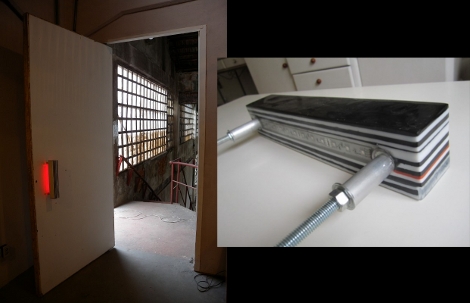
Halloween’s on its way and we want to remind you to get started early so you can show us what you’ve got in store for the little ones this year. [Pete] already finished a simple project to spice up the bushes in front of his house. His trio of glowing and blinking eyes will make a nice addition to the bushes in front of his house. Each is made from a pair of over-sized LEDs mounted on popsicle sticks. After passing the leads through holes in the wood, they are soldered to some resistors and cat-5 cable. The conductors are covered in hot glue to help protect from moisture, and then they’re ready to be driven by the ATtiny2313 which uses random numbers to help ensure the blinking doesn’t look timed. Check out the video after the break to see how he did.
This is a great example that you don’t have to take on the most complicated project in the world to be appreciated. But if you’re looking to be remembered for years to come you might want to aim high by building something like the trash-can jack-in-the-box, or a puking pirate.
Continue reading “Glowing Eyes Project Keeps It Simple This Halloween”
















